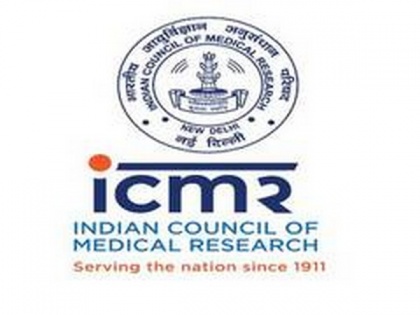COVID-19 cluster of 23 Italian tourists posed a higher attack rate of 65.4 pc than 2 other ships: ICMR
By ANI | Published: May 24, 2020 06:35 PM2020-05-24T18:35:27+5:302020-05-24T19:00:11+5:30
A study by the Indian Council of Medical Research (IMCR) to identify the attack rate of coronavirus infection in emerging clusters has revealed a higher attack rate of 65.4 per cent among 23 Italian tourists visiting India than Diamond Princess (19.2 pc) and Grand Princess (16.6 pc).

COVID-19 cluster of 23 Italian tourists posed a higher attack rate of 65.4 pc than 2 other ships: ICMR
A study by the Indian Council of Medical Research (IMCR) to identify the attack rate of coronavirus infection in emerging clusters has revealed a higher attack rate of 65.4 per cent among 23 Italian tourists visiting India than Diamond Princess (19.2 pc) and Grand Princess (16.6 pc).
The ICMR study reconfirms a higher rate of transmission among close contacts. Therefore, scientists have opined for public health measures such as physical distancing, personal hygiene and infection control measures, which are necessary to prevent the transmission of infection.
"In total, 17 of 26 people -- 23 tourists and three Indians -- were COVID-19 positive with an attack rate of 65.4 per cent. Out of 17 patients, about nine were symptomatic, while eight did not show any symptoms. Of the nine who developed symptoms, six were mild; one was severe and two were critically ill. The median duration between the day of confirmation for COVID-19 and RT-PCR negativity was 18 days ranging from 12-23 days. Unfortunately, two patients died with a case fatality of 11.8 per cent," noted the ICMR study.
"Our study cluster showed a higher attack rate than that reported in existing literature such as in Diamond Princess Cruise ship (19.2 pc) and in Grand Princess Cruise ship (16.6 pc). This may be due to the closed environment, high and persistent exposure to index case during their tour travel (average of six hours daily for eight days)," added the ICMR study.
On February 21, a group of 23 Italian tourists reached Delhi. Three Indians -- tour guide, driver and conductor -- were also in the group, who visited several tourist places in Rajasthan. By March 3, about 17 of the 26 people from the tourists' group tested positive for SARS-CoV-2, registering the infection rate of 65.4 per cent.
In the very first, a 69-year-old male (index case), resident of Lombardy province, Italy, and family physician by profession, developed fever, cough and difficulty in breathing on February 23. Later, he was hospitalised at Sawai Man Singh (SMS) Medical College in Jaipur for the treatment and was found coronavirus positive.
The findings of the study pointed out that the epidemiological investigation of this cluster of 17 cases was consistent with person-to-person transmission.
The ICMR study has also highlighted that two possible scenarios of transmission existed in this cluster. "First, the index patient could have been infected during his medical practice in Italy and later transmitted the infection to his co-tourists."
Second, the tourists could have individually picked up the infection from Italy before starting their trip to India. The first scenario appears to be most likely, considering the duration of onset of symptoms (12 days since their arrival in India except for the index case), the duration of viral clearance being more than 14 days in other tourists and no history of contact or exposure to any suspected or confirmed COVID-19 positive patients in Italy.
According to the World Health Orgsation (WHO), there were only three COVID-19 cases reported from Italy on February 21, but by February 28, Italy had 888 cases including 21 deaths due to SARS-CoV-2. Most cases had occurred in the Lombardy and Veneto regions of Northern Italy with local transmission being the main source of SARS-CoV-2 infections.
The ICMR study states that the proactive COVID-19 testing of close contacts led to the identification and isolation of the asymptomatic and pre-symptomatic cases, thus preventing further transmission of the infection.
Hence, the strategy to trace and test close contacts is crucial for early identification and isolation of positive patients and thereby preventing the community transmission, adds the study.
( With inputs from ANI )
Open in app